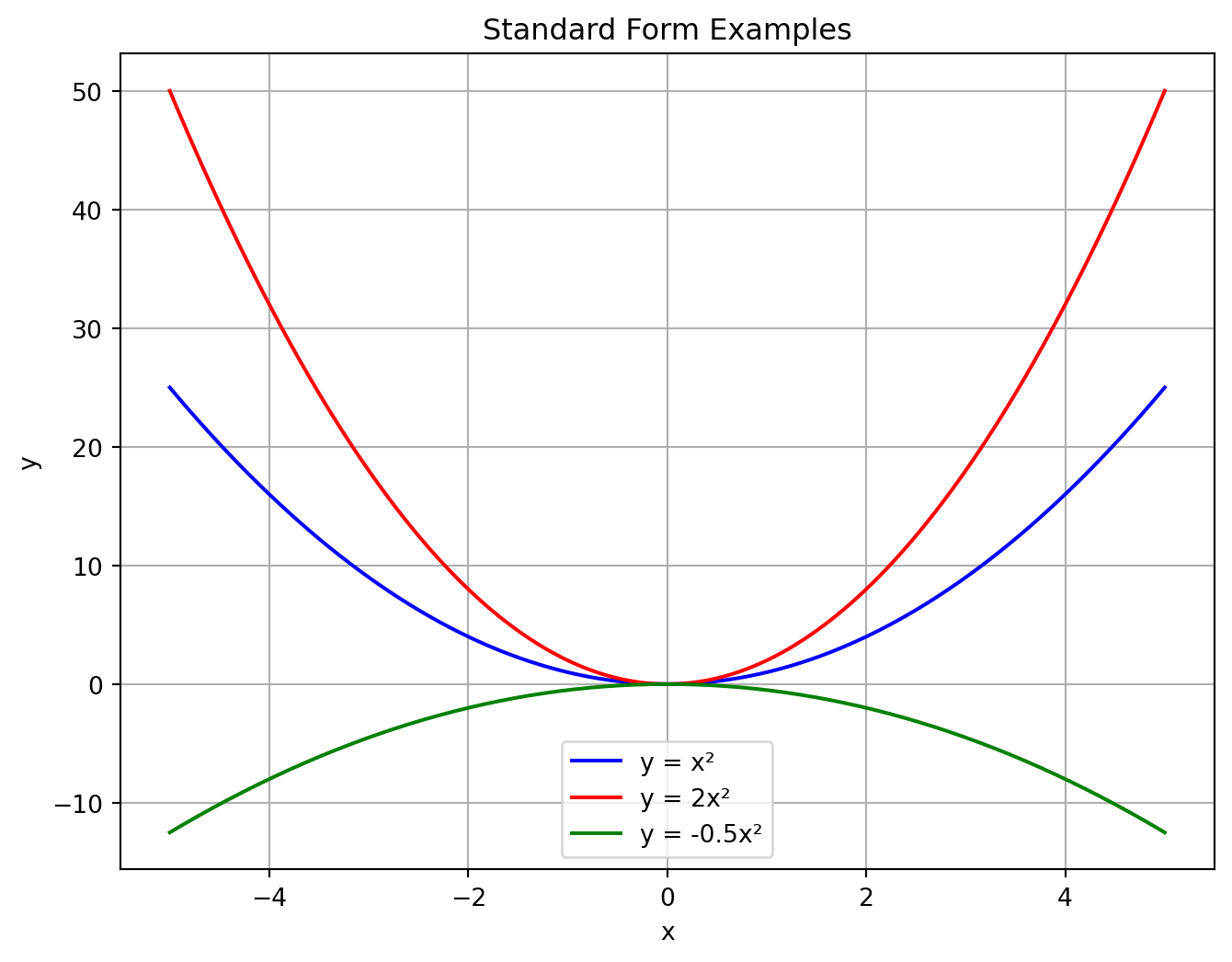
Projectile Motion and Parabolas
Projectile Motion and Parabolas
Projectile motion occurs when an object is launched into the air and moves under the influence of gravity alone. The path of the object forms a parabola, making it a real-world application of quadratic functions.
Concept and Equations
The motion of a projectile can be described using the following equations:
- Horizontal Distance (x):
\[ x(t) = v_0 \cos(\theta) \cdot t \]- \(v_0\) is the initial velocity (m/s).
- \(\theta\) is the launch angle (degrees or radians).
- \(t\) is time (seconds).
- \(v_0\) is the initial velocity (m/s).
- Vertical Height (y):
\[ y(t) = v_0 \sin(\theta) \cdot t - \frac{1}{2} g t^2 \]- \(g\) is the acceleration due to gravity (\(9.81 \, \text{m/s}^2\)).
- The term \(-\frac{1}{2} g t^2\) represents the downward pull of gravity.
- \(g\) is the acceleration due to gravity (\(9.81 \, \text{m/s}^2\)).
Together, these equations describe a parabolic trajectory of the form:
\[
y = ax^2 + bx + c
\]
where the coefficients depend on the initial conditions of the launch.
Key Features of the Parabola
- Start Point: The launch occurs at time \(t = 0\) and position \((0, 0)\).
- Maximum Height: At the peak of the trajectory, the vertical velocity is zero. This occurs at:
\[ t_{\text{max}} = \frac{v_0 \sin(\theta)}{g} \]
The maximum height \(y_{\text{max}}\) is given by:
\[ y_{\text{max}} = \frac{(v_0 \sin(\theta))^2}{2g} \] - Range (Horizontal Distance): The projectile lands when \(y = 0\). The total time of flight is:
\[ t_{\text{flight}} = \frac{2 v_0 \sin(\theta)}{g} \]
The total horizontal distance (range) is:
\[ x_{\text{range}} = v_0 \cos(\theta) \cdot t_{\text{flight}} \]
Visual Demonstration
Below is a plot showing the parabolic trajectory of a projectile under gravity. The red markers highlight key points of the path:
- The Start point \((0, 0)\)
- The Maximum Height, the peak of the parabola
- The End Point, where the projectile returns to the ground
Real-World Examples
- Sports: Kicking a soccer ball, shooting a basketball, or hitting a golf ball all create parabolic trajectories.
- Physics and Engineering: Understanding projectile motion helps design rockets, missiles, and water fountains.
- Entertainment: Animations and games simulate realistic projectile paths using these principles.
Takeaway
Projectile motion beautifully demonstrates how quadratic functions and parabolas describe real-world motion, combining simplicity and accuracy to solve problems in physics, engineering, and everyday life.